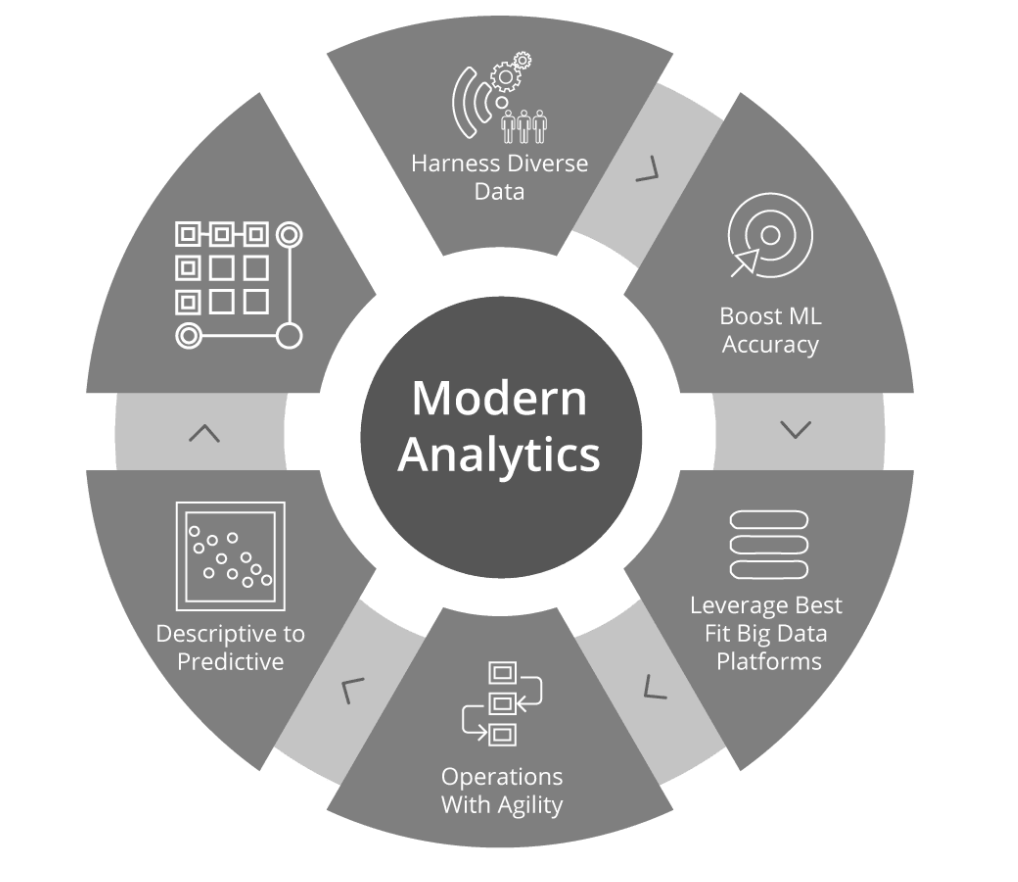Unleash the true power of your data residing in data lakes
Our second blog on Building Data Lake on AWS explained the process of architecting a data lake and building a process for data processing in it.
This blog is our attempt to document how Clairvoyant leverages AWS to solve data insights-related use cases. Read more to know how data can be used efficiently for extracting/generating insights.
Insights Tier
Once we have the Cleaned and Transformed data, we can use it to derive insights.
What are Data Insights?
Data insights are knowledge that a company gains from analyzing a set of information pertaining to a given topic or situation. Analysis of this information provides insights that help businesses make informed decisions and reduce the risk that comes with trial-and-error testing methods.
There are copious amounts of data at our fingertips in the digital world that we live in. But though anyone can access raw data, the ability to extract valuable and actionable information from the numbers is what will determine whether you can generate a competitive advantage for your business.
What is the difference between data and insights?
Many people think of data and insights as synonymous, but there are subtle yet important distinctions between these two terms. Data is information, generally sets of numbers or text. Insights are the knowledge gained through analyzing the data, generating conclusions from the data that can benefit your business. Data is the input, and insights are the output.
 Data analytics and Data science hierarchy
Data analytics and Data science hierarchy
Data may show that your users had 2,000 sessions in the past 30 days.
Analytics can show you how many sessions occur on iPhones in India.
Insights could reveal that those sessions on iPhones were 20% less likely to be purchased.
Why do we need insights?
-
Fast and accurate analysis of customer information
-
360-degree view of customer behavior
-
Help better understand customer needs
-
Deliver personalized interactions
-
Post-go-live support
-
System monitoring
-
Reconnect with customers
-
Spot trends and predict outcomes
-
Strengthen customer relationships
Lack of Insight = Lack of Engagement
A common approach to Data Insights

Modern Analytics with cloud platforms
 Modern analytics flow on cloud
Modern analytics flow on cloud
Challenges in Data Insights

Tackling challenges faced while extracting insights from data
 Tackling challenges while extracting insights
Tackling challenges while extracting insights
Despite the complexity and challenges faced while extracting insights from data, its advantages are undeniable. Data Insights provides a deeper understanding of one’s data; they provide a hawk-eye view to the company stakeholders on anomalies.
Building Data Insights/Analytics Solutions on AWS
AWS provides us with several services to go with each step in the data analytics pipeline. We have different architecture patterns for the use cases, including Batch, Interactive, and Stream processing, along with several services for extracting insights using Machine Learning.
Principally, there are four different approaches to implement the pipelines:
-
Virtualized: This is the least recommended approach but is the easiest first step for someone migrating their data analytics pipeline into AWS. You can simply create EC2 instances that are powerful enough and deploy your own open-source (or licensed) data analytics framework in it.
-
Managed Services: Essentially, these are EC2 instances, managed by AWS — with the analytics framework running on them (also managed by AWS). That spares us to focus on our data alone and relieves us from a lot of unwanted work. AWS provides a range of managed services for Big Data Analytics. Most open-source frameworks are included in this, including some proprietary to AWS.
-
Containerized Services: Now we enter the exciting world. Containerized applications are the ones deployed on a Docker container. Naturally, these are a lot more cost-effective than the previous two — because we do not need the underlying EC2. AWS has a range of services and ready Docker Images to help us get started with such a solution. You can, of course, bring in your own.
-
Serverless: The most exciting and the most recommended by AWS is the chunk of serverless services. These are highly cost-effective and scalable. AWS encourages us to switch over to the native serverless architectures. The only downside to this approach is that it locks us down to AWS — if you want to plan for the possibility that your solution may outlive outside AWS cloud, you might want to be careful. Else, serverless architecture is the best choice.
Popular tools/technologies used for Analytics and ML

Summing up the entire process
The below diagram sums up the entire process of data analytics, along with the various choices available to us:
Sample Architecture for Real-time Streaming Insights/Analytics
This uses a variety of services for processing and storing data. As the data stream is gathered, it is processed by Kinesis Data Analytics for initial processing. Further, it is fed into the data processing stream of different applications for extracting and classifying different aspects of the data. This is fed into the AI services for making any necessary real-time predictions.
Rest are stored in a variety of data storage services, based on the data extracted and segregated out of the input stream. This is finally used to generate notifications and insights. The purified data stream is forwarded to any other downstream application that can process it. Learn more about the data processing of building a data lake on AWS here.
For all your cloud based services requirements, contact us for the best business services.
Key Takeaways


